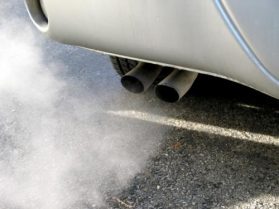As cooler, fall temperatures begin to settle into the region, you may be tempted to idle your vehicle more often than usual. Idling is one of the main contributors to air pollution, yet many misconceptions exist regarding the need to idle and the negative effects of idling on our air, our engines and our pocketbooks. Before you think about warming your car on a cold morning, or idling in a drive-thru or school drop-off zone on a chilly winter afternoon, make sure you can decipher what’s myth and what’s fact when it comes to vehicle idling.
Myth: Engines should be warmed up before driving, especially in cold weather.
Fact: Today’s electronic engines do not need long warm-ups, even in winter. No more than 30 seconds of warm-up time is needed in the winter. Easing into a drive is the best way to get a vehicle heating system to deliver warmer air faster.
Myth: Idling is good for your engine.
Fact: Excessive idling can damage your engine components, including cylinders, spark plugs and exhaust systems. Fuel is only partially combusted when idling because an engine does not operate at its peak temperature. This leads to the build-up of fuel residues on cylinder walls that can damage engine components and increase fuel consumption.
Myth: It’s better to leave the engine running than shutting it off and restarting it because “cold starts” are hard on the engine and use more gas.
Fact: Frequent restarting has little impact on engine components. Idling, however, forces an engine to operate in an inefficient and gasoline-rich mode that can affect the engine’s performance and reduce gas mileage. More than ten seconds of idling uses more fuel than restarting the engine.
Myth: It’s better to leave an engine idling because “cold starts” produce more pollution.
Fact: Driving a car immediately after a cold start allows the engine to heat up significantly faster, especially in newer models. When the car heats faster, its catalytic converter becomes more efficient at reducing emissions — by as much as 99 percent.
Explore our website for information on anti-idling initiatives, or additional steps you can take to help improve air quality. We also encourage you to like us on Facebook or follow us on Twitter @gatewaycleanair.

 How often do you find yourself idling your car in drive-thrus, parking lots or right outside your child’s school? It’s probably a lot more than you care to admit, especially given how bad all of that unnecessary idling is for our air.
How often do you find yourself idling your car in drive-thrus, parking lots or right outside your child’s school? It’s probably a lot more than you care to admit, especially given how bad all of that unnecessary idling is for our air.